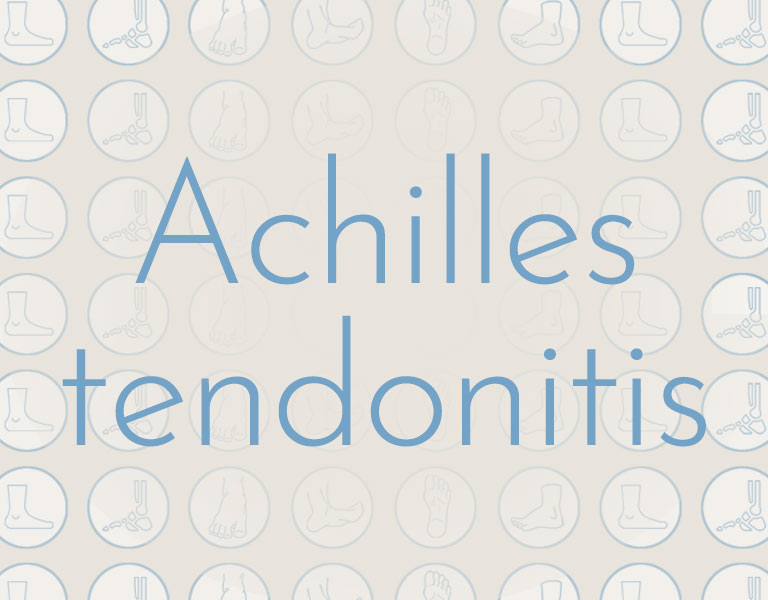Achilles tendonitis
Achilles tendonitis
Problems that affect the Achilles tendon are common among active middle-aged people. The problems cause pain at the back of the calf and can result in a rupture of the Achilles tendon in severe cases.
Anatomy
The Achilles tendon is a strong, fibrous band that connects the calf muscles to the heel. When the muscles contract, they pull on the Achilles tendon causing your foot to point down and helping you raise up on your toes, sprint, jump, or climb. Several different problems can affect the Achilles tendon — some rather minor and some quite severe.
Tendocalcaneal Bursitis: A bursa is a fluid-filled sac designed to limit friction between rubbing parts. Tendocalcaneal bursitis is an inflammation in the bursa behind the heel bone, limiting the Achilles tendon movement.
Achilles Tendinitis/ Tendonopathy: Repetitive strain through the tendon causes small micro tears that do not heal and generate pain. Running and jumping activities are the most common activities causing this.
Achilles Tendon Rupture: In severe cases, the force may rupture the tendon. The classic example is the middle-aged tennis player or “weekend warrior” who places too much stress on the tendon and experiences a rupture of the tendon.
Symptoms
Tendocalcaneal bursitis begins with pain, irritation, and swelling at the back of the heel. Achilles tendinitis usually occurs farther up the leg, just above the heel bone itself. Pain is present with walking or touching the area. Finally, Achilles tendon rupture is usually an unmistakable event. Sometimes a snap can be heard, and the victim of a rupture usually describes a sensation like “someone kicked me in the calf.” Following rupture there can be swelling in the calf and usually the patient cannot rise up on the toes.
Diagnosis
Diagnosis is almost always made based on clinical history and physical examination. In cases where there is an Achilles tendon rupture in question, an MRI scan may be necessary to confirm the diagnosis.
Medical Treatment
Medical treatment for tendocalcaneal bursitis and Achilles tendinitis usually consists of a combination of rest, anti-inflammatory medication, and physical therapy. Many orthopedists and podiatric surgeons feel that Achilles tendon ruptures in younger active patients should be repaired surgically due to the increased strength of the healed tendon following surgery versus non-operative cast treatment.



